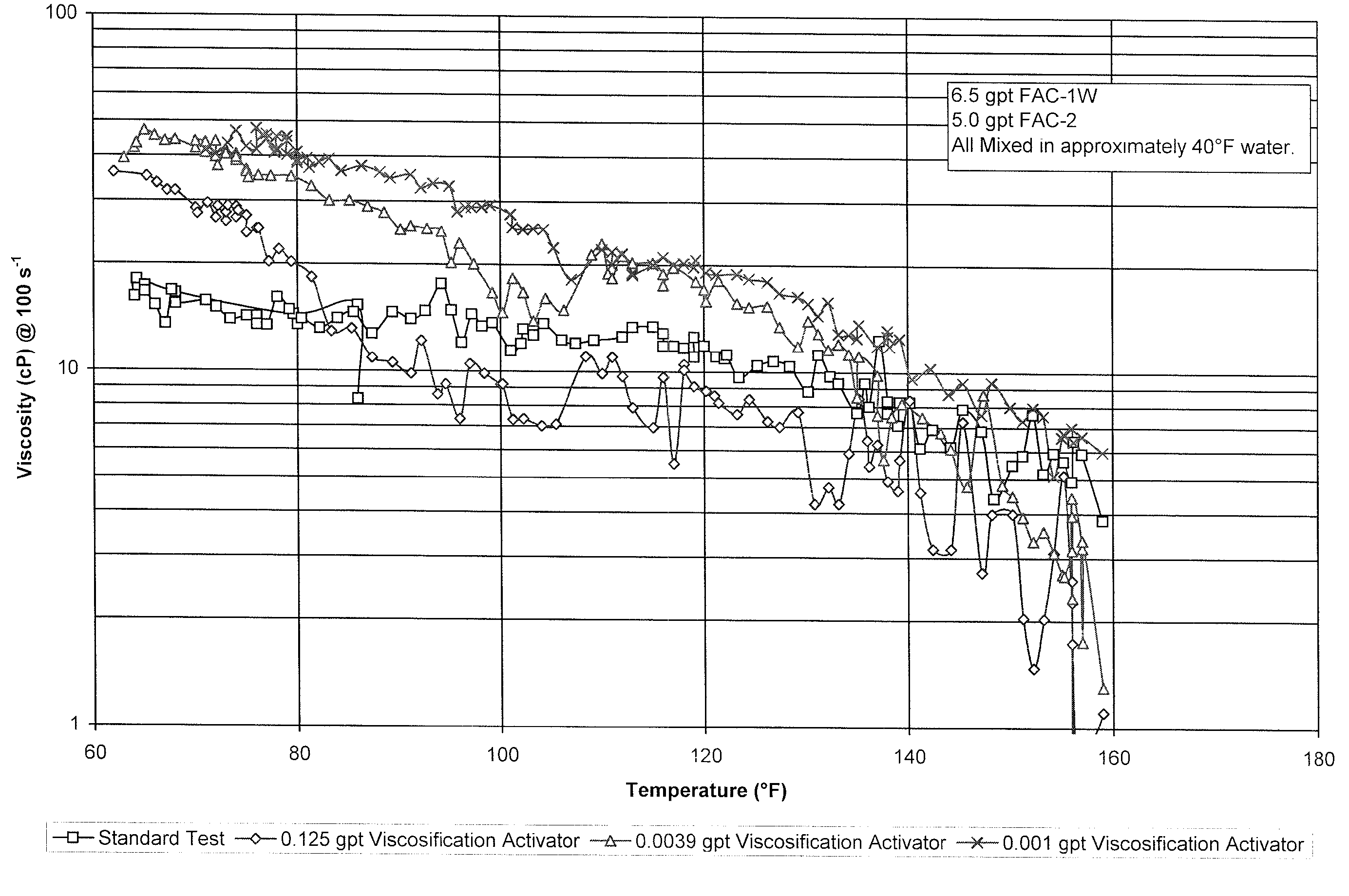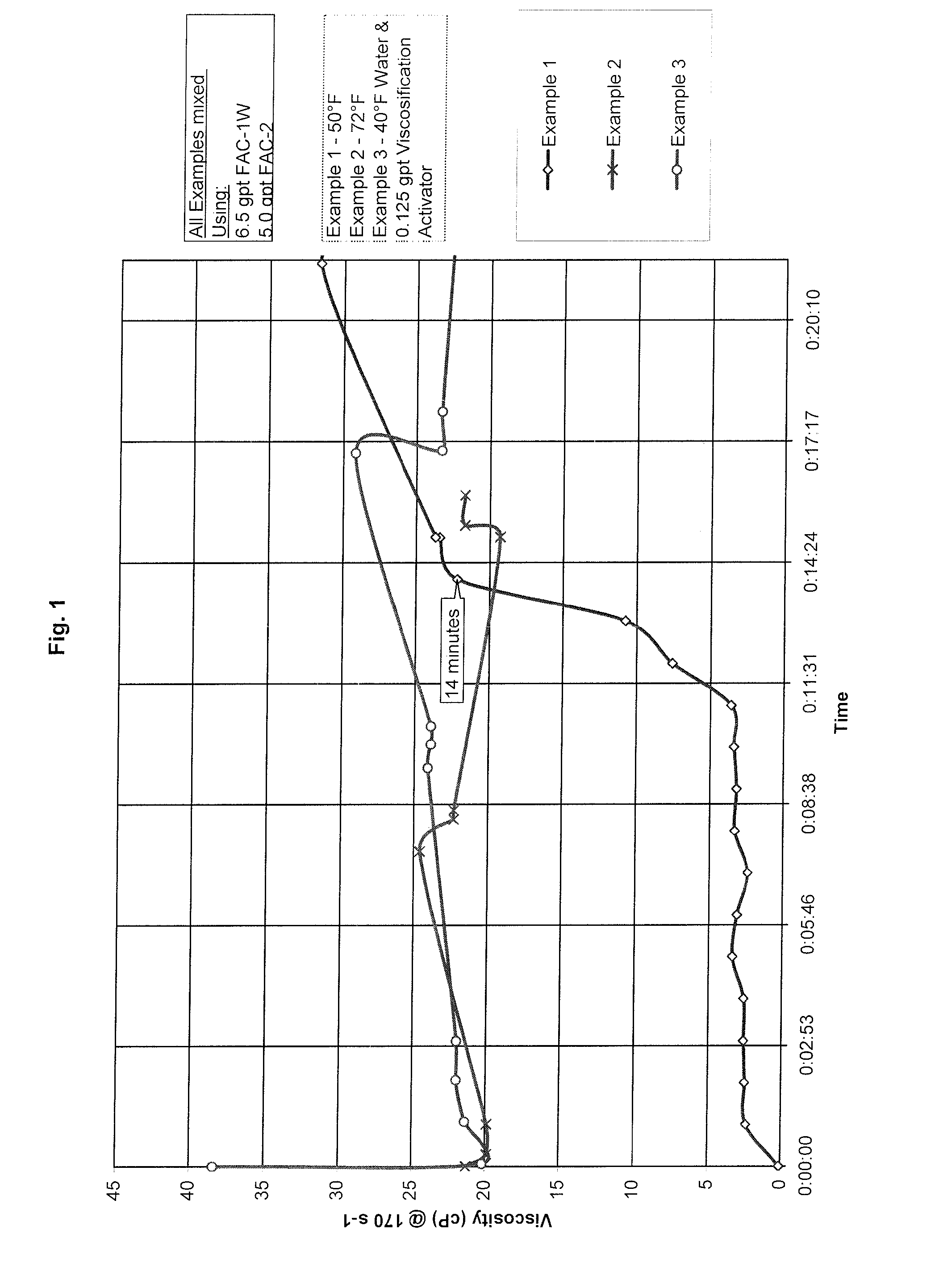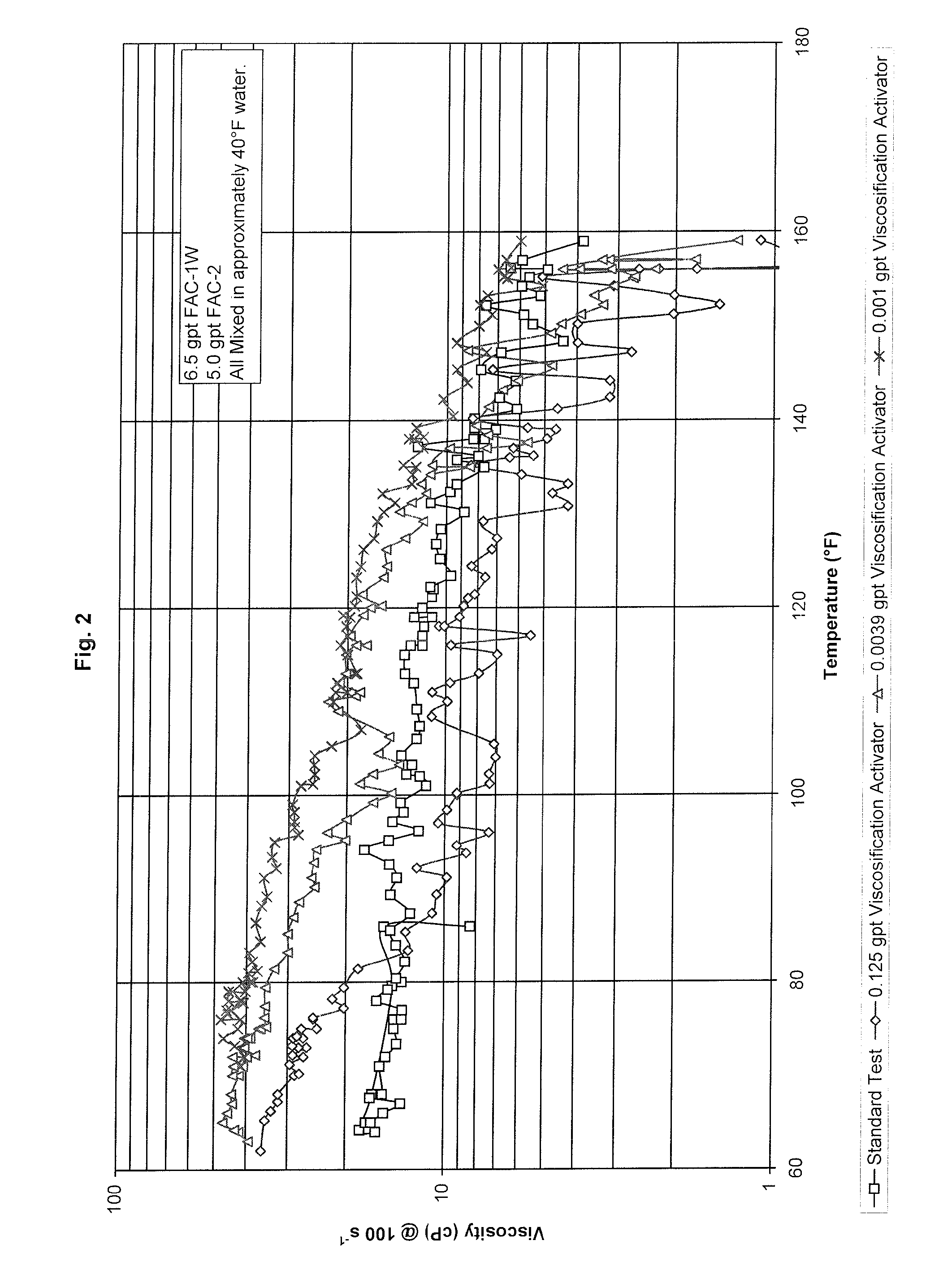Well Treatment Fluid Containing Viscoelastic Surfactant and Viscosification Activator
a technology of viscoelastic surfactant and activator, which is applied in the direction of sealing/packing, well accessories, chemistry apparatus and processes, etc., can solve the problems of severely compromised proppant transport efficiency, long time to effectuate the requisite gellation, and fluid viscosification, etc., to achieve the effect of enhancing increasing the viscosity of the fluid
- Summary
- Abstract
- Description
- Claims
- Application Information
AI Technical Summary
Benefits of technology
Problems solved by technology
Method used
Image
Examples
examples
[0050]As used herein:
[0051]gpt refers to gallons per thousand;
[0052]FAC-1W refers to a C18 trimethyl quaternary ammonium chloride, a product of BJ Services Company;
[0053]FAC-2 refers to sodium xylene sulfonate.
[0054]Viscosification agent, VA, refers to an alkoxylated alcohol of tridecyl alcohol and 6 moles of ethylene oxide.
examples 1-3
[0055]As set forth in Table I, the VA was introduced into the base media (fresh water) and allowed to mix for 30 to 60 seconds. Subsequently, 6.5 gpt of FAC-1W and 5.0 gpt FAC-2 were immediately sequentially added. The resulting fluid was allowed to mix for about 30 seconds.
TABLE IMixingEx. No.Temp., ° F.VA, gpt150—272—3400.125
The resulting fluid was then placed in a Fann 35 type rheometer, where viscosity was measured.
[0056]Example 1, as illustrated in FIG. 1, demonstrates a time lapse of 12 to 14 minutes for the system to viscosity when the VA is not included in the fluid. Examples 2 and 3 show the effect of room temperature mixing conditions (the treatment fluid not containing VA) versus cold temperature mixing conditions (the treatment fluid containing VA). FIG. 1 shows that gelling occurs immediately when the treatment fluid contains both activator and viscoelastic gellant at a mixing temperature of 40° F. in contrast to the treatment fluid mixed at room temperature. Thus, FIG....
examples 4-6
[0057]As set forth in Table II, aqueous surfactant assemblies were prepared at 40° F. by introducing the VA to a base media (fresh water) and then allowing mixing to occur for 30 to 60 seconds. Subsequently, 6.5 gpt of FAC-1W and 5.0 gpt FAC-2 were immediately sequentially added and the resulting fluid was allowed to mix for about 5 minutes.
TABLE IIEx. No.VA, gpt4—50.12560.003970.001
The resulting fluid was then placed in a pressurized Fann 50 type rheometer, where viscosity was measured as the temperature was allowed to increase to about 160° F. Example 4 of FIG. 2 illustrates a baseline at 70° F. Example 5 demonstrates some added viscosity up to about 80° F. Exs. 6 and 7 demonstrate that better results are obtained when the concentration of VA is decreased.
PUM
| Property | Measurement | Unit |
|---|---|---|
| temperatures | aaaaa | aaaaa |
| temperature | aaaaa | aaaaa |
| temperatures | aaaaa | aaaaa |
Abstract
Description
Claims
Application Information
 Login to View More
Login to View More - R&D
- Intellectual Property
- Life Sciences
- Materials
- Tech Scout
- Unparalleled Data Quality
- Higher Quality Content
- 60% Fewer Hallucinations
Browse by: Latest US Patents, China's latest patents, Technical Efficacy Thesaurus, Application Domain, Technology Topic, Popular Technical Reports.
© 2025 PatSnap. All rights reserved.Legal|Privacy policy|Modern Slavery Act Transparency Statement|Sitemap|About US| Contact US: help@patsnap.com



